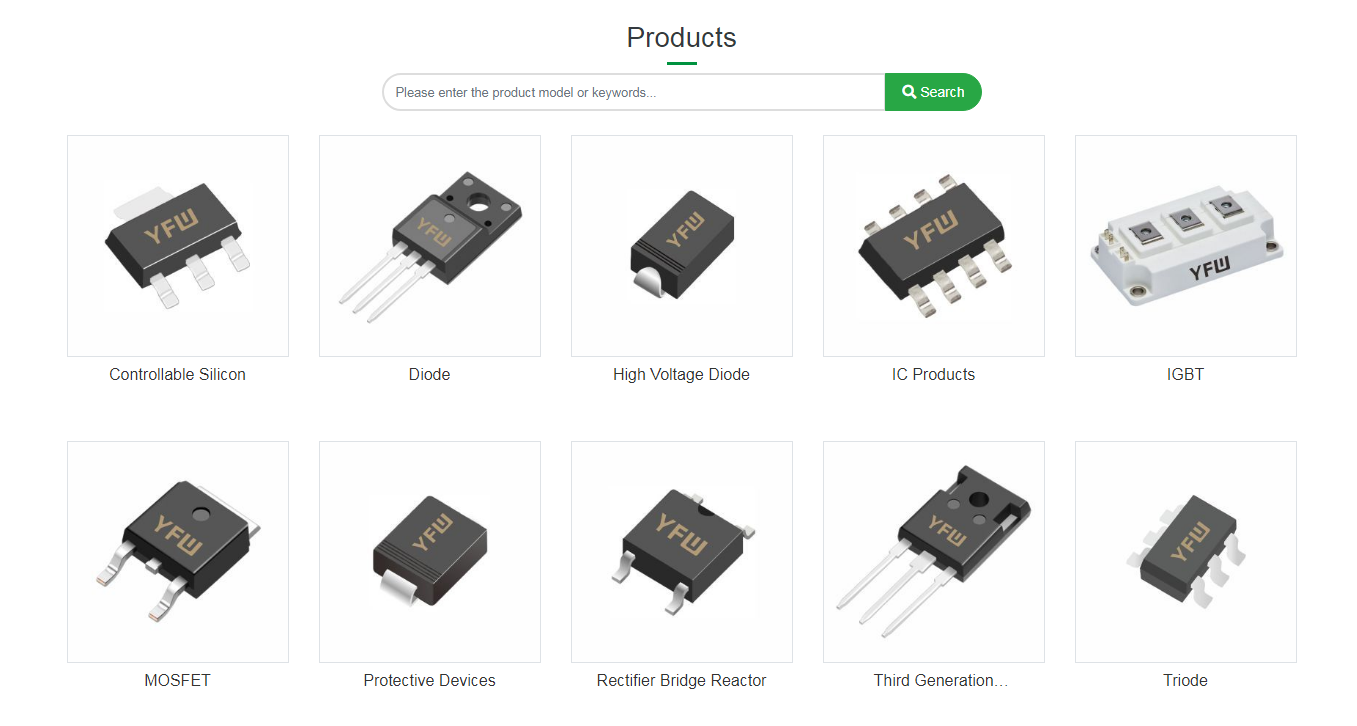Date:2025-03-18 Categories:Industry News Hits:966 From:Guangdong Youfeng Microelectronics Co., Ltd(YFW)
A switching diode is an electronic component used to control the flow of current. It has fast switching speeds and low switching losses allowing it to operate at high frequencies and is widely used in power supplies, communications, computers, and various electronic devices. I. Basic Structure: A switching diode consists two semiconductor materials, one is a P-type semiconductor, and the other is an N-type semiconductor. In the P-type semiconductor, the impurity contains positive charge, called, and in the N-type semiconductor, the impurity contains negative charge, called electrons. The two semiconductor materials are combined together through a PN junction, forming the basic structure of switching diode. II. Characteristics: 1. Fast Switching Speed: Switching diodes have very fast switching speeds, capable of completing switching operations within the nancond level. 2. Low Switching Losses: Since the switching diode has no emitter, its switching losses are small, which can effectively reduce energy consumption. . High Frequency of Work: Switching diodes can operate at high frequencies, suitable for the control of high-frequency circuits. 4. High Reliability: Switchingodes have a long service life and high reliability. III. Working Principle: The working principle of the switching diode is based on the characteristics of the PN junction. forward biased, current can pass through the PN junction, forming a conductive state; when reverse biased, the PN junction will produce a depletion region, and the current cannot pass through forming a cutoff state. By controlling the change of the forward or reverse bias voltage, the switching diode can be controlled. IV. Types: According to different application needs switching diodes can be divided into different types: 1. Ordinary switching diode: It has lower voltage withstand capacity and current withstand capacity, suitable for low voltage, small applications. 2. Rectifier switching diode: It has higher voltage withstand capacity and current withstand capacity, suitable for high voltage, large current rectifier circuits. 3.everse switching diode: It has a special structure design, which makes it conduct only under the action of reverse voltage, suitable for specific application scenarios. 4. Enhanced switchingode: It is optimized and designed on the basis of ordinary switching diodes, with higher voltage withstand capacity, current withstand capacity and switching speed. V. Operating Procedures 1. First, confirm the positive and negative poles of the switching diode. Generally, the positive pole of the switching diode is marked as the anode (Anode, and the negative pole is marked as the cathode (Cathode). Ensure the correct connection. 2. Before operation, first disconnect the power supply to ensure safety According to the need, connect the switching diode to the circuit. Generally, the anode is connected to the positive pole of the power supply, and the cathode is connected the negative pole. 3. After power on, control the switching diode through the external circuit. The control method can be through switches, level signals, or other components.4. When the control signal arrives, the switching diode is in the conductive state. At this time, current can flow from the anode to the cathode, and voltage drop is low. 5. When the control signal is disconnected, the switching diode is in the cutoff state. At this time, the current cannot pass through the di, and the voltage drop is high. When you need to change the state of the switching diode, just change the control signal

Previous:What is a Silicon Photodiode and its basic structure, and development history?
Next:NZT560A 1A 80V SOT-223 Marked NZT560A Small Signal Transistor Y Micro Brand